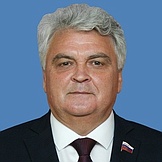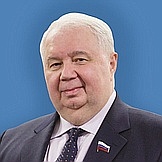Regional flags and emblems


PROFILE
Established The Mordovian Autonomous Region on 10 January 1930
The Mordovian ASSR on 20 December 1934
The Republic of Mordovia on 25 January 1994
Capital Saransk
The Republic of Mordovia is part of the Volga Federal District
Area 26,100 sq km
Population 758 400 (2025)
Ethnic groups
(2020 National Census, %)
Russian – 54.09
Mordovian – 38.73
Tatar – 5.31
Other – 1.87
Administrative divisions (2024)
Municipal districts − 22
City districts − 1
Rural towns − 16
Rural districts − 233
Geography and climate
The republic is located in the east of the East European Plain in the Volga River basin, on the border of two natural zones – the forest-steppe zone and the zone of coniferous and broad-leaved forests. The relief of the republic is a plain, cut by a dense system of washes. The western part of the republic is the Oka-Don Plain, and the central and eastern part is the Volga Upland.
Mordovia borders on the Chuvash Republic, Penza, Ryazan, Ulyanovsk and Nizhny Novgorod regions.
There are 155 rivers in the region, the total length of which is about 4,500 km. The rivers belong to the Oka and Volga basins; the largest of them are Moksha and Sura. There are 139 lakes in the republic. Caved-in lakes are located in the northwest in karst areas; the largest is the Yendovishche. There are many reservoirs and ponds in the republic. The climate is moderately continental. January temperatures average –10.0°C. July temperatures average 18.6°C.
The republic is home to the Smidovich Mordovian State Reserve and the Smolny State National Park.
There are deposits of non-metal minerals. Building materials (marl and chalk rocks, moldings, clays, loams, building sands, diatomites) and peat are of great importance for the economy.
The republic has underground mineral waters, medicinal muds and underground artesian waters for domestic and drinking needs; there are also deposits of a unique type of fossil — moraine oak.
Government
The legislative branch is represented by the State Assembly of the Republic of Mordovia, which is the permanent, representative and only body of legislative authority in the region.
The State Assembly of the Republic of Mordovia has 48 deputies, elected for five years, with 24 of them running in single-member constituencies and the other 24 in the single electoral district, where winners are identified in proportion to the number of votes cast for lists of candidates nominated by electoral associations.
The current State Assembly was elected in September 2021. Its term expires in September 2026.
The executive branch of the Republic of Mordovia is represented by the Head of the Republic of Mordovia, the Government of the Republic of Mordovia, which is the permanent supreme body of executive authority in the republic and heads the system of the republic’s executive agencies. The Prime Minister of the Republic of Mordovia is appointed by the Head of the republic by agreement with the State Assembly of the Republic of Mordovia.
The Head of the Republic of Mordovia is the republic’s highest-ranking official, who runs the executive branch and determines the structure of the executive agencies in the republic. He is elected for a term of five years by citizens of the Russian Federation permanently residing in the republic. The term of office of the current incumbent expires in September 2026.
Economy and natural resources
The strategy of Mordovia’s economic development is mainly aimed at maintaining the region’s competitiveness and the development of cluster industries.
Educational institutions, innovative engineering centers and industrial enterprises are inextricably linked.
Mordovia is a territory of sustainable and planned economic development. The largest share in the structure of its economy traditionally belongs to processing industries and accounts more than 90%. The industry of Mordovia has a cluster structure. The republic’s productions rank among the best among enterprises of the Volga Federal District and Russia. The republic has an efficient agency of innovative development, the Technopark Mordovia autonomous organization.
The republic develops machine building and metal processing. The machine-building sector is represented by the following large enterprises:
- lighting cluster: Lisma, Kadoshkino Electrotechnical Plant, Ardatov Lighting Plant, Xenon, and NEPES RUS;
- transport and agricultural engineering: Ruzhimmash, Management Company of RKTM Holding, VKM-Stal, Saransk Dump Truck Plant, Sareks, and Neon;
- electrical engineering and instrument making: Optikenergo Group, Orbita, Elektrovypryamitel, Leader-Compound, Saransk Instrument Making Plant, and Saransk Television Plant.
Along with machine building, the industrial capacity of the republic is based on enterprises of the building materials industry, rubber products, chemical and food industries.
Agriculture focuses on crop production and livestock breeding. Crop production specializes in the production of cereals and sugar beet, while livestock farming is represented dairy and beef cattle breeding along with pig and poultry farming.
The Republic of Mordovia not only fully provides its consumer demand for meat, dairy, eggs and vegetables but also sells the products to other regions.
The region has a unique location and high logistical potential. Federal highway M5 Ural runs through Mordovia, which is part of an important transcontinental route.
One of the largest hub railway stations in Russia, Ruzayevka, is located in the republic, and connects Central Russia with the southeastern part of the European territory, the Urals and Siberia.
Culture and tourism
Mordovia is a multiethnic republic with a rich history and original ethnic culture. Here you can get acquainted with the traditions of the most numerous Finno-Ugric people of Russia — the Mordva, whose main ethnic groups are Moksha and Erzya.
The region was closely connected with the peasant wars led by Stepan Razin and Emelyan Pugachev.
The capital of Mordovia is Saransk — one of the oldest cities in the Middle Volga Region, which arose as a military fortress in 1641. The landmark of Saransk — the Cathedral of Holy Righteous Warrior Fyodor Ushakov — is one of the largest and most beautiful temples in Russia. Another popular place among local residents and tourists is the Erzya Museum of Fine Arts where the largest collection of ”Russian Rodin“ works is displayed. On Tysyacheletiya Square the Star of Mordovia, the highest fountain in the Volga Region, is on display. This musical fountain is in the shape of a traditional Mordovian ornament and emits multicoloured water jets up to a height of 45 m. In Saransk, there are nine water complexes, each of which is a piece of art, due to which the city is sometimes called the city of fountains.
The nature of the republic is diverse from dense Meshchyora forests in the northwest to forest steppes in the south. One of the oldest protected areas of Russia – the Smidovich Mordovian Nature Reserve – is also located in the region. This is a place of untouched nature with an area of more than 32,000 ha. The huge variety of forest cultures, lakes, animals and birds allows the reserve to be viewed as a natural museum with numerous eco-trails.
A living monument of nature in Mordovia is the Simkino oak, which is more than 420 years old. Once serving as a place of pagan sacrifice, the oak remains a site for pilgrimages.
Mordovia is famous for its Orthodox shrines. One of the largest is St. John the Theologian Makarov Monastery — a large pilgrim centre with a picturesque surrounding territory, which is rightly called the ”Little Athos.“ The Nativity-Theotokos Sanaksar Monastery is surrounded by water from three sides. The main shrine of the monastery is the grave of the world-famous naval commander Admiral Fyodor Ushakov.
In the Erzyan village of Podlesnaya Tavla, one of the ”seven wonders of the Finno-Ugric world“ local folk masters create the famous Tavlin wooden toy. In the village of Staraya Terizmorga, there is the ethnographic open-air museum Peasant Farmstead located in the Ethnic Culture Centre. The museum tells visitors about the unique culture of the Mordovian people, their ethnic peculiarities, traditions and customs, recreating the life of rural residents by displaying embroideries, national costumes and goods of applied art.


